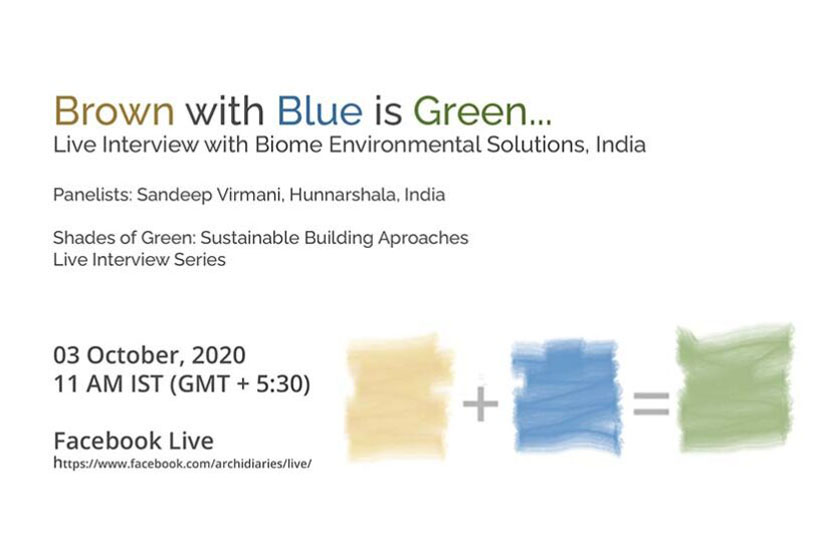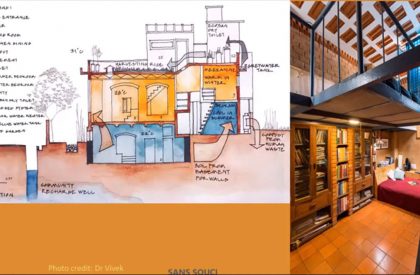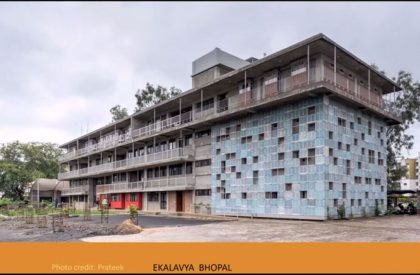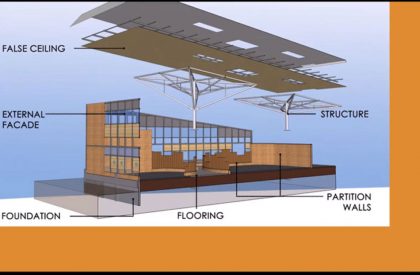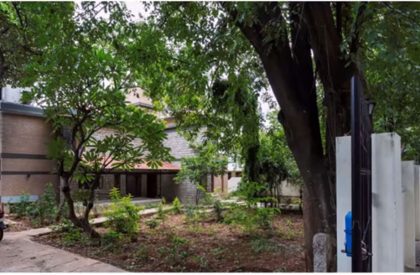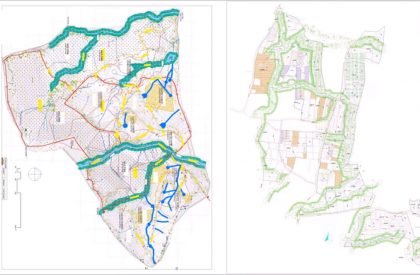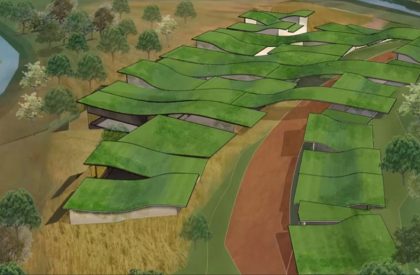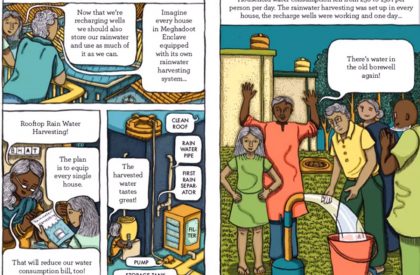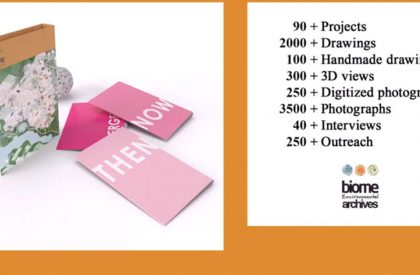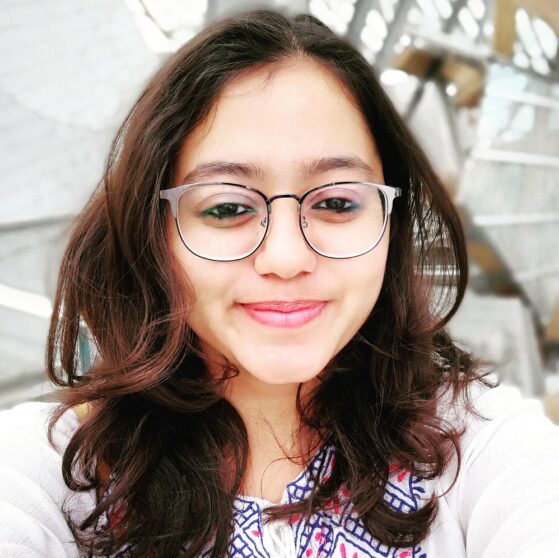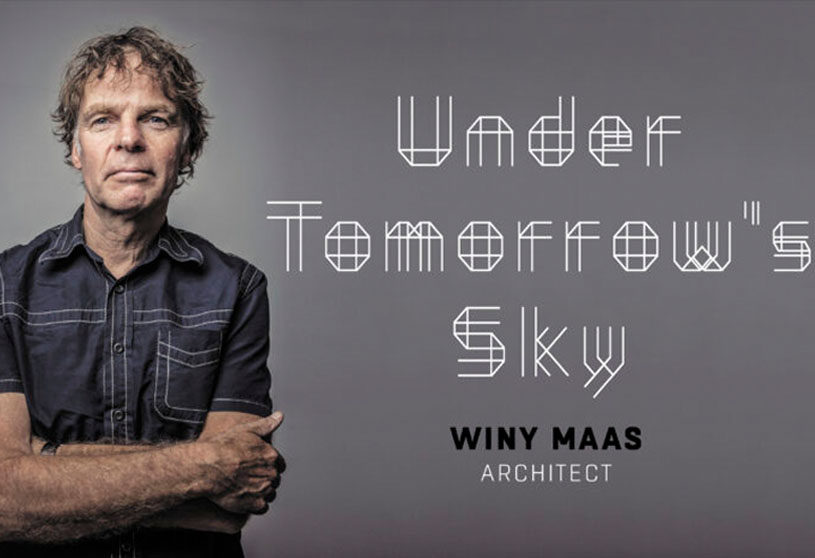Biome Environmental Solutions is a multidisciplinary firm working on ecological designs. Its multidisciplinarity springs from the coming together of architects and people from various professions with keen interest and passion to work on ideas of water. The architecture part of Biome began in 1991 as Chitra Vishwanath architects and water began in 2000 as RainwaterClub, started by Chitra and Vishwanath respectively. In 2008 they merged and became Biome. The dictionary meaning of biome is the ecology of a place.Biome to date has designed about 700 architectural projects of various scales and is involved with ideas on water from the household level to the national level. Biome water as it is called also advice on policy-level decisions to the government.
The ninth and the concluding interview in the series Shades of Green, where we talk to various practicing architects about sustainability and its different approaches in architecture and design is a conversation between the team Biome and what makes it a Biome. The team also chats about how Biome engaged itself during the lean days of the pandemic with its book and archive project. They share with us their ideas on how the practice of architecture in the era of the Anthropocene should go beyond space making and encompass more of the issues concerning the environment by integrating multiple disciplines and interests.
As a panelist in this interview we have Sandeep Virmani. He is an environmentalist, with training in Architecture. Based in Kutch, over the past 30 years he has worked with communities all over India, celebrating their traditional knowledge in water management, food production, animal breeding, and seed conservation, building with natural materials, and wildlife conservation. He has set up two organizations, Hunnarshala Foundation to work with built habitats and Sahjeevan to work with various indigenous communities and their ecosystems. He has recently begun writing stories and painting.
The discussion starts with Chitra introducing us to the team at Biome, on the left is the team of architects and engineers which she calls the brown, and the right is a team of water conservation, which she calls the blue. She gives a short run of the flow of the presentation, which is fittingly unique for culminating the series of shades of green. All the people from the brown and blue team take turns to explain specific topics that go into the practice and later pass the baton to their college, before introducing them.
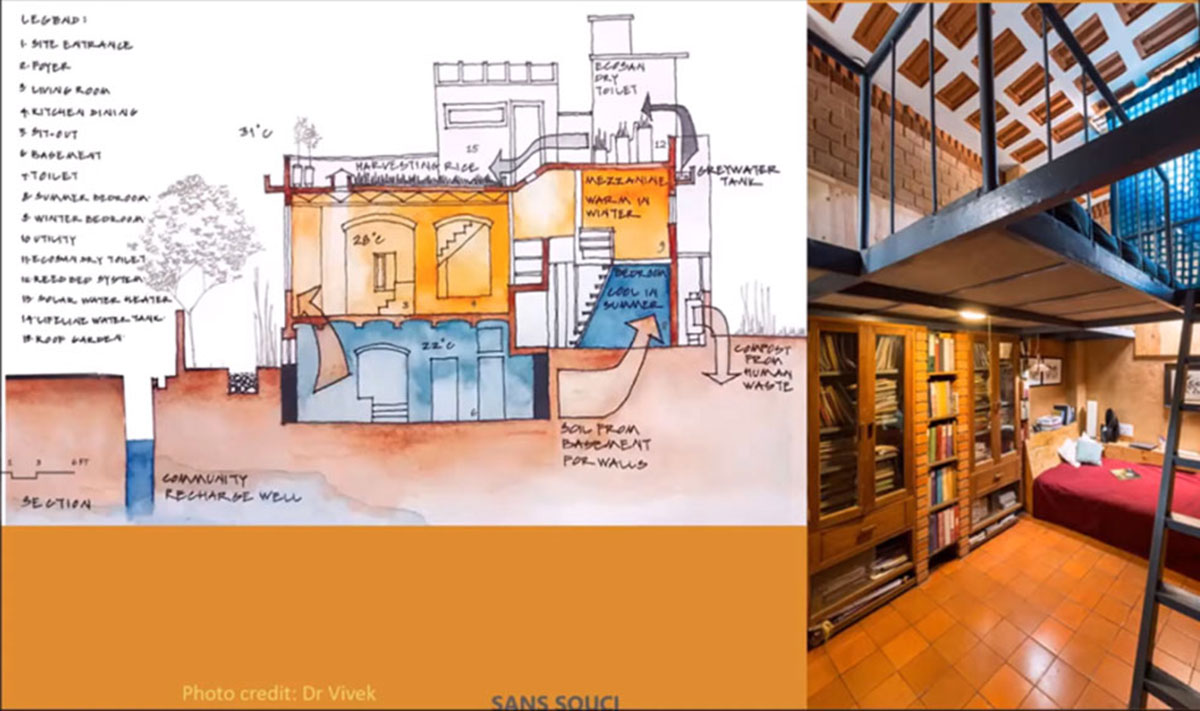
Chitra starts with the initial projects they took up at biome, these are mostly homes for the middle class which was inspired by Laurie Baker’s architecture. With the progress of the firm, there was a hunger for more than this language of architecture. The opportunity to grow came in building their home, here is when they moved from economical constructions to ecological constructions. In their home they experimented with water harvesting, rainwater collection, treating wastewater while creating mezzanine spaces and a city home that fit into a tight plot.
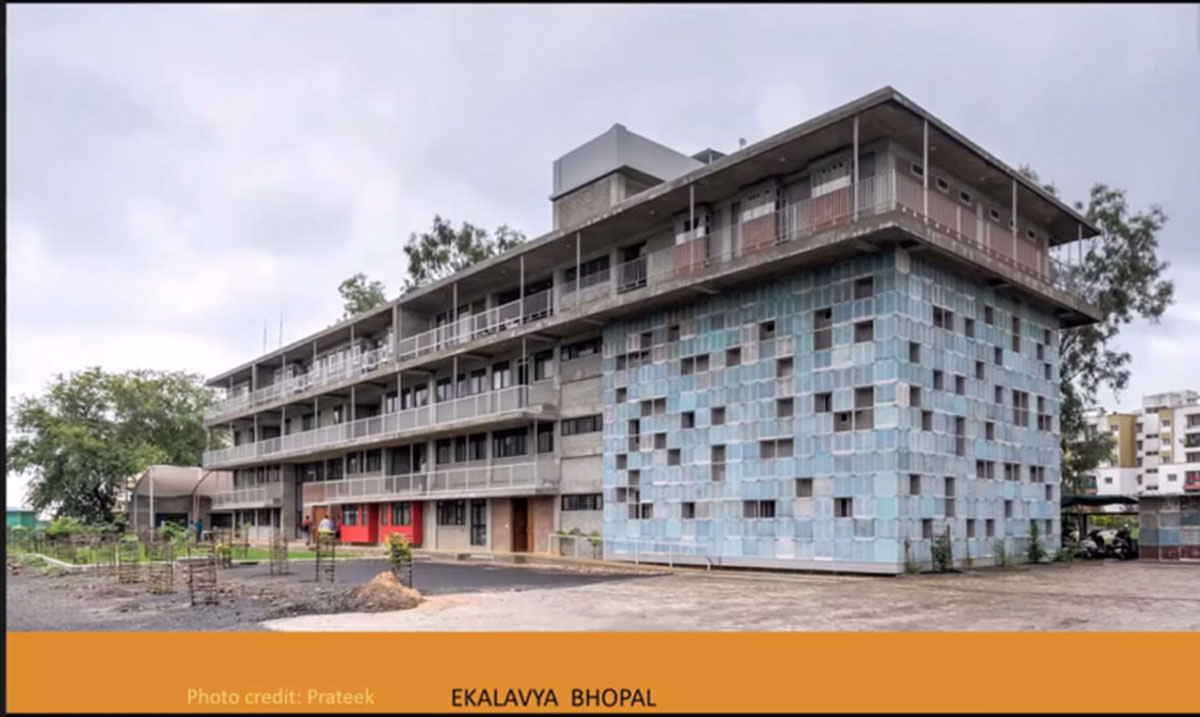
This exploration of building with earth kept developing with the projects. The recent projects, like Eklavya, Bhopal has brought them to look at buildings as waste sinks, in an attempt to protect the building from the heat in the south-west corner where the paper storage activity happens, the facade is made as an envelope of repurposed louvers that protect them from heat gain.
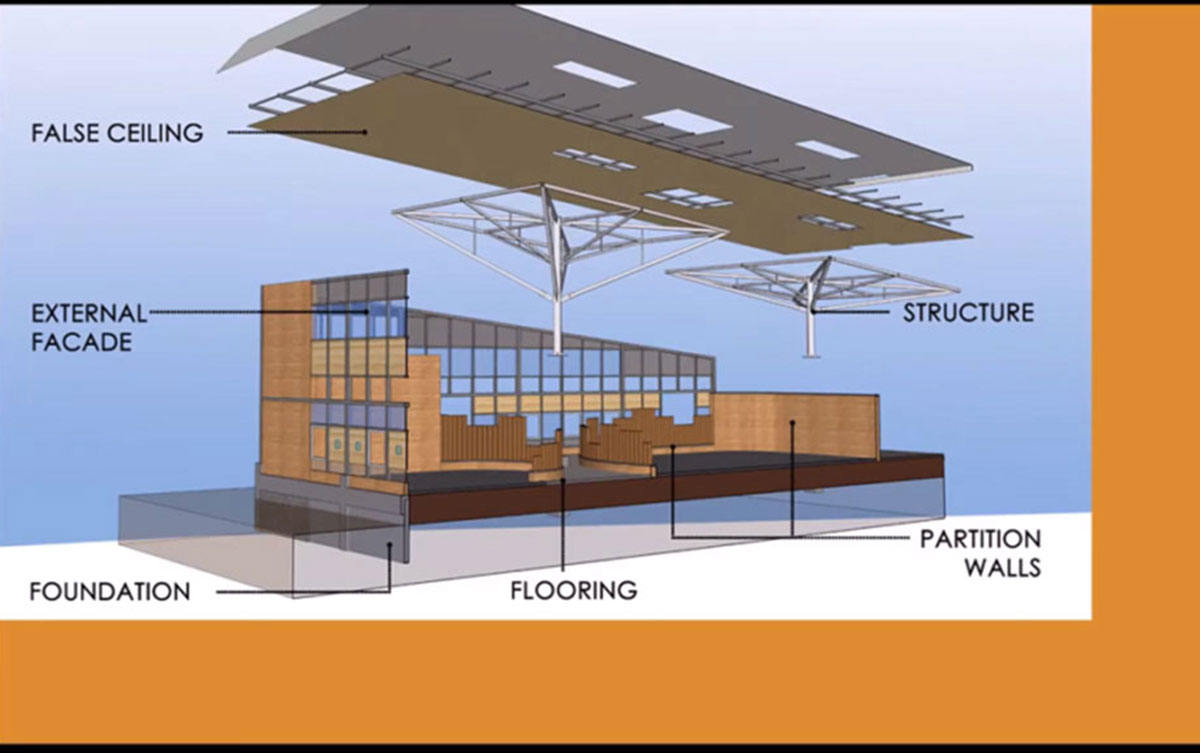
The current, and fascinating idea for Biome is to design a building that can be reused and taken back as a technical mutant. Using materials like steel, earth, and pavers for flooring, the interior partitions are made by paper tubes. The idea behind the Atelier school building was to build in a way that when the building is redundant, all of these elements can be reused or recycled.
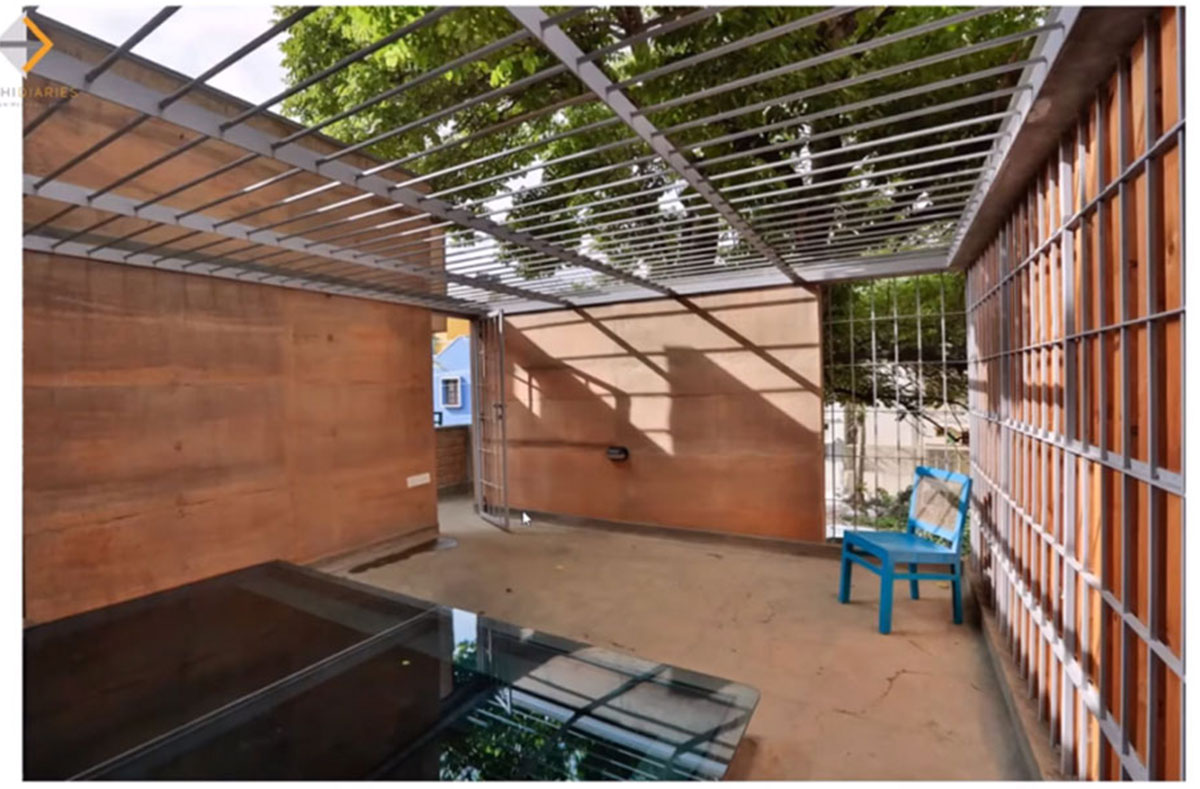
Sharath, one of the senior architects at Biome, takes us through a few residential projects by the firm. In Arvind and Priya’s Residence, a home for a young couple in their late 20’s, the approach was to build the lower floor to rent and have the family stay on the upper floor. The idea of a courtyard and partitions made up of stone walls gives this project an interesting play of levels.
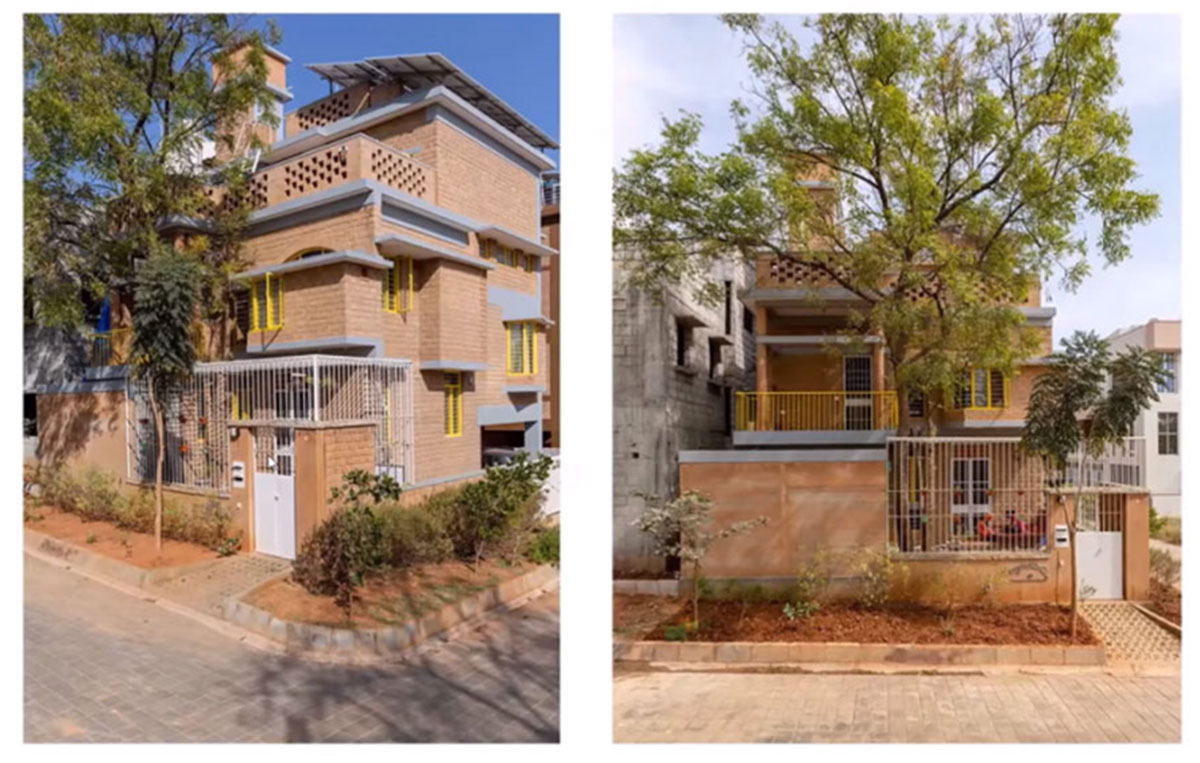
In Dwarkamai residence, the challenge was to include a joint family with three generations and meet all of their requirements in a tight space. With designing these tight spaces, here they also designed the roof, accompanied by water harvesting, solar panels, and waste-water recycling, a biogas unit that helped the family be aware of the environmental resources they use.
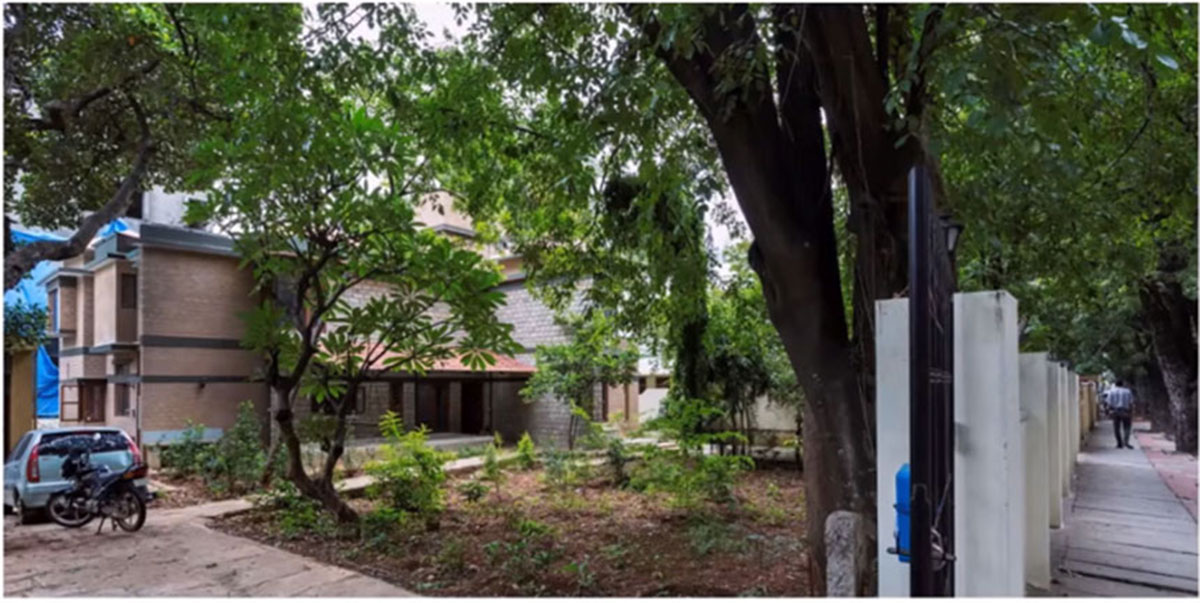
In Raghavan’s residence, the older structure was dismantled and segregated into different components to reuse it in the new construction of the house. In essence, the house is remade using the same materials now as different elements of the house.
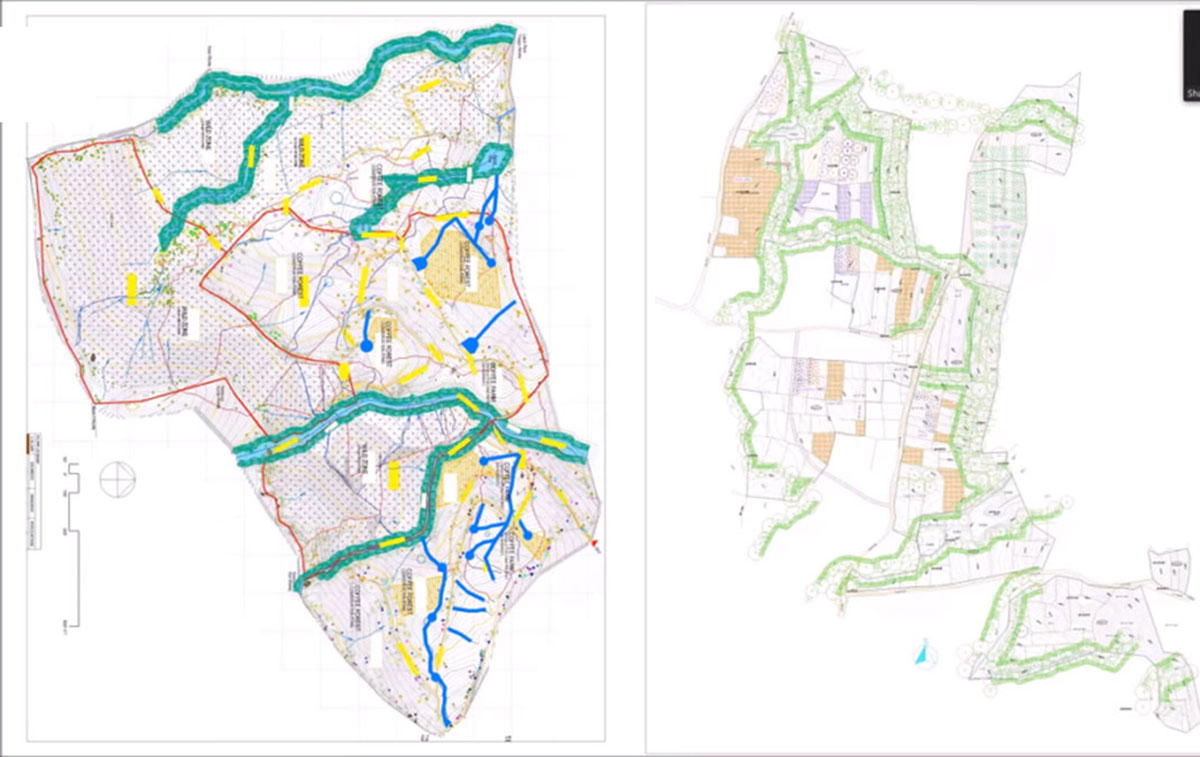
The farming collective is a set of city people who are looking to adopt farming as a lifestyle choice, have got together, and have come together and invested in the land. The role of biome is to plan for the clients to farm and use this land, grow, and live off the land. The approach is to understand the land, they set up riparian buffers after studying the hydrology of the place. These buffer zones are no or limited activity zones. Establishing these zones retains the health of the land. The next step was to have zones of farming and wildlife. The least productive land was chosen to build for the community.

Anurag, another senior architect from the team biome introduces us to the rural projects at biome. The Masalewale village, a village owned by Suhana masalas. These clients wanted this land to be set up in a sustainable example for permaculture and animal husbandry. The focus was to be the shepherds of the land and to conserve resources rather than being owners of it.The idea was to conserve resources and to prolong the resilience while living in this land. This village too went through the process of studying hydrology to identify the micro-watersheds. Based on these 3 watersheds found in the hydrological survey of the site and its surrounding they went ahead and developed the strategies to conserve soil, water, and moisture in the land. After extensive research, the team used strategies and elements like stone contoured walls, staggered terraces to slow down water movement and soil erosion. They introduced half-moon terraces on the areas with higher slopes and planted local fruit-bearing trees there. Along the sides of the water streams, they planted grass to slow the water speed & prevent erosion. They introduced detention spots and harvesting ponds around the site to slow.
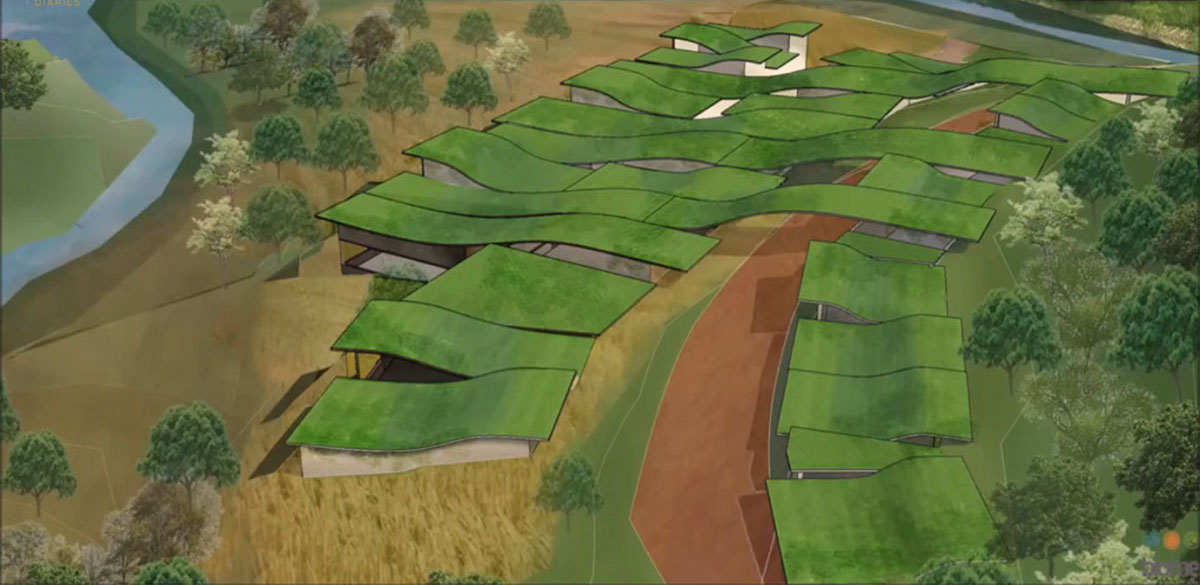
The shelters built for the cowshed are designed with a green roof, for a closed-loop system of growing and consuming the fodder in the same place. The shelters here are designed with Carvey grass in highlands, to create a similar space to the ones around the village.
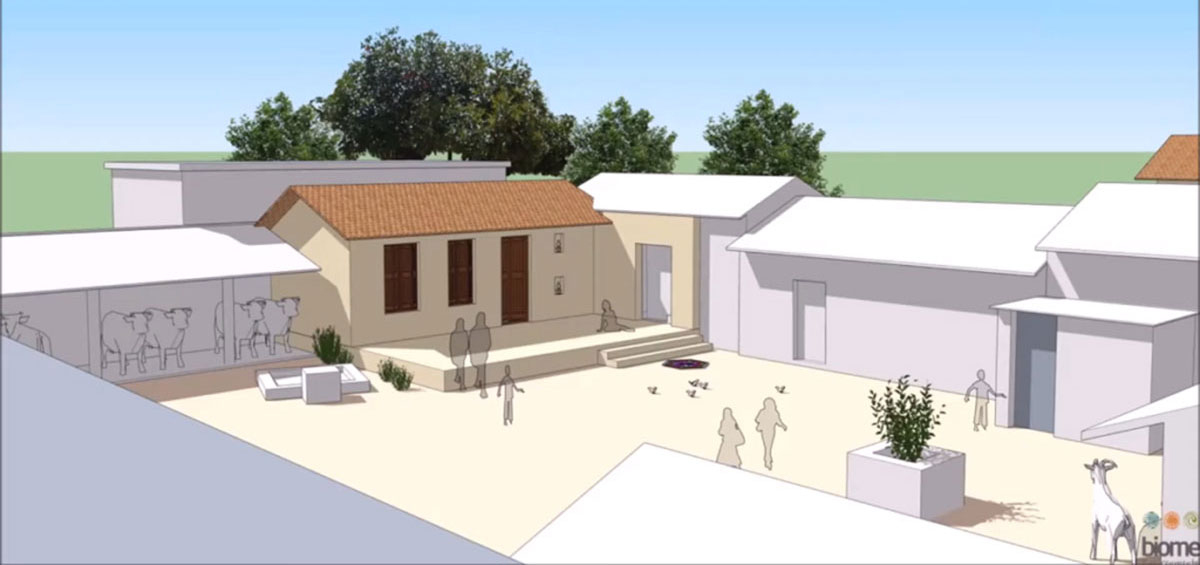
For Madhya Pradesh tourism, Biome is developing homestays in Bundelkhand and Baghelkhand. In designing these they had to do an intensive study of the lifestyle and architecture of the land around. The homestays were done as an insert in existing buildings to retain the essence of daily activities as a part of the homestays. The challenge was to adapt the older structures to the new comfort zones that a homestay demands, while thinking about the experience of living in these places.
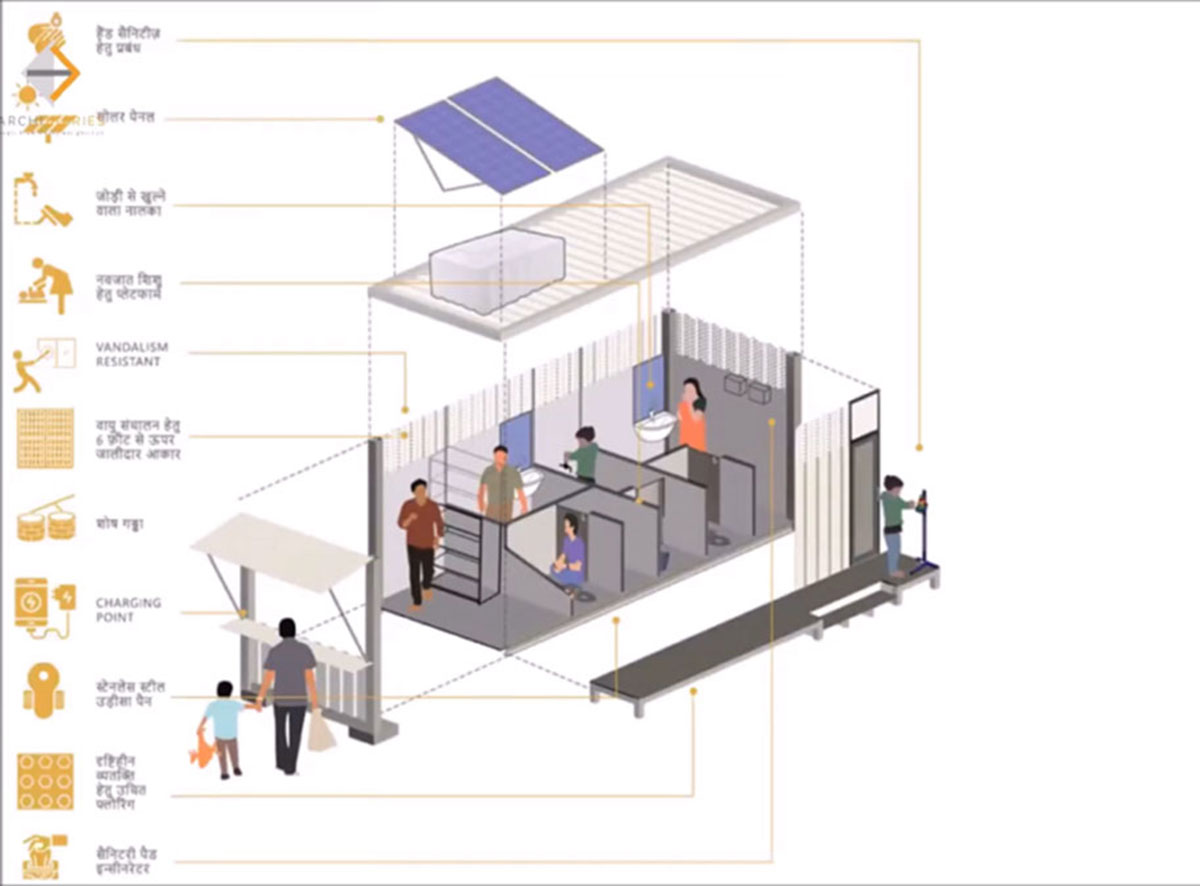
A competition project was done for the Bihar government to build inclusive public toilets. There were three models designed with the idea of having a portable structure so it could be set up in various places.
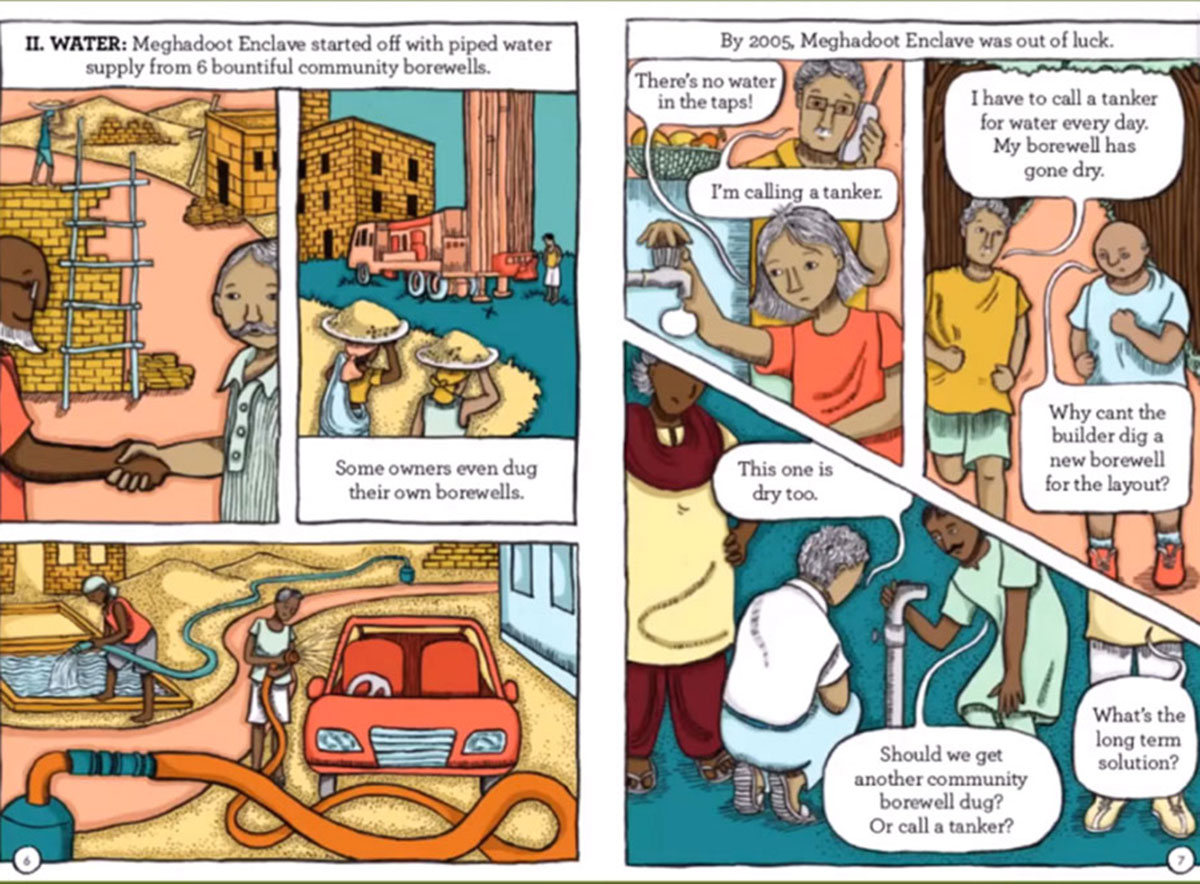
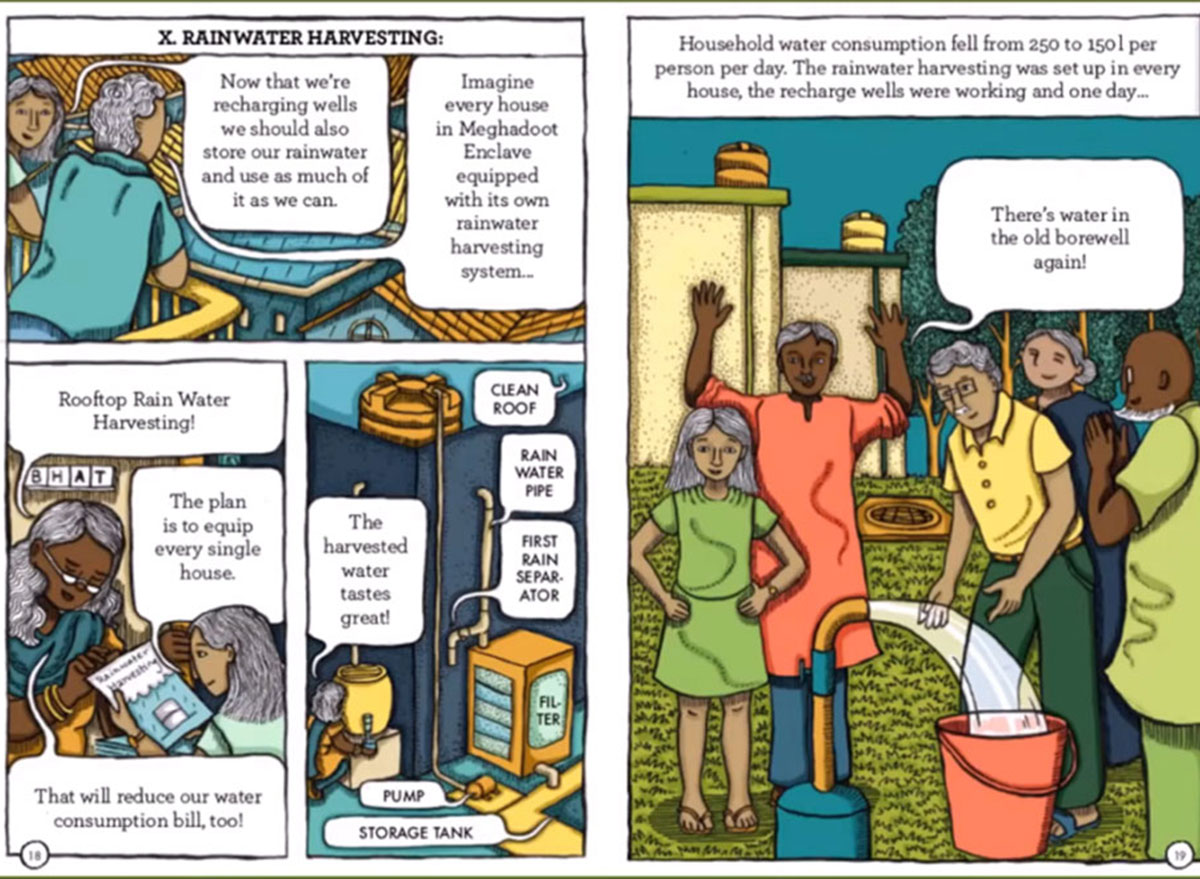
Shubha leads the water management team at the biome trust. She tells us a story about a community, which lives on the outskirts of Bangalore, which has no access to piped water supply from the municipality. This community saw the condition of drying borewells and found themselves increasingly ordering water tankers for their daily water usage. This is when they approached biome for a solution, the process of finding one has taken them on a 12-year long journey that has led them to zero-liquid discharge and managing all their water needs in-house. Shubha takes us through their journey with a well crafted comic book that displays it in great detail. The journey of this community through their initial struggle to find water by digging individual borewells, to developing a system of recharge wells within the community while having a high engagement with making sure to replenish water and reduce the usage of water leaves us in awe. The process in the comic book shows to what extent a community can be ecological in their process and the length to which they can explore. This example has become a go-to place for people who want to learn mechanisms behind water harvesting and conservation and bringing communities together. They have started A 100 wells campaign, to take the learnings from this community and apply it across the city.
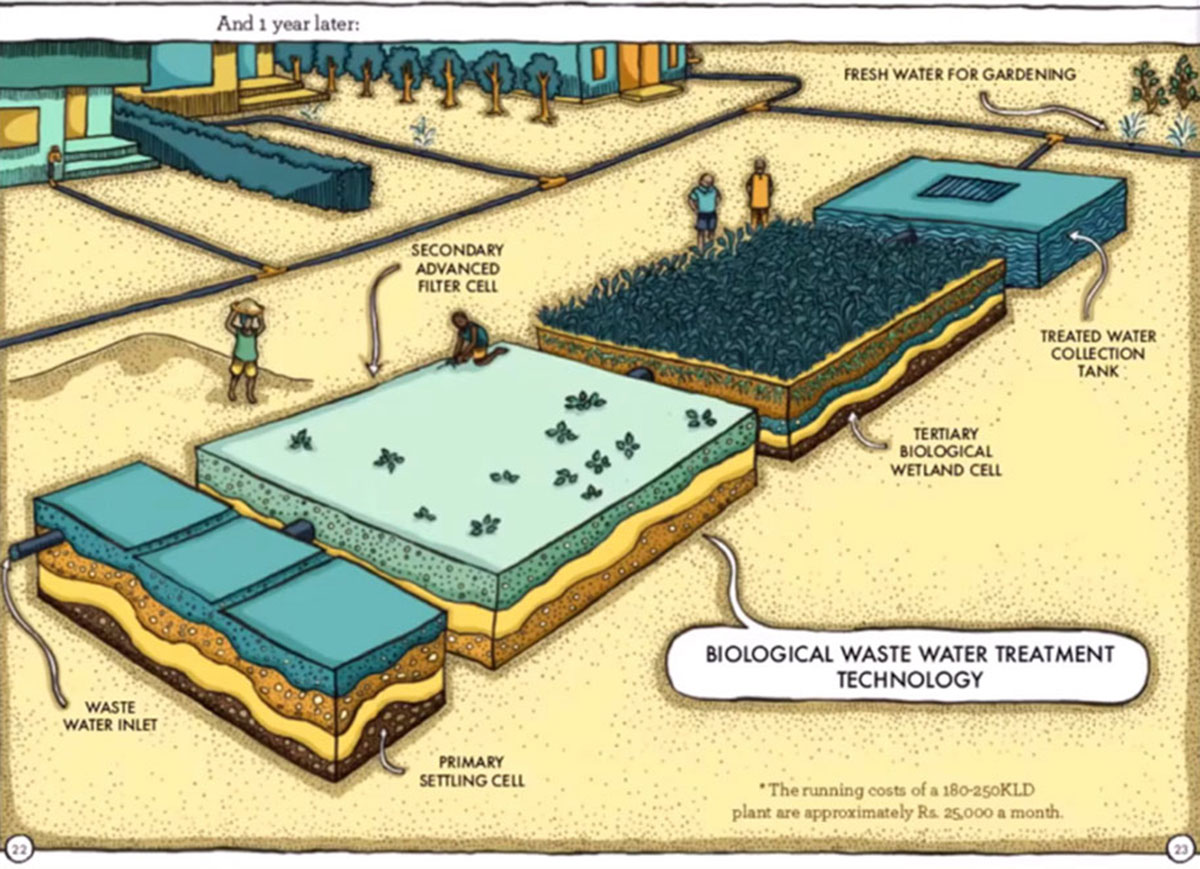
“Over a period of time, borewells started to recharge again. Around 2014, along with Biome, they started thinking about the wastewater in the community…With a lot of consulting and looking ahead, they went ahead with biological wastewater treatment technology. It wasn’t easy to get the community on board with the idea and gathering the funds. By setting up the plant, the where earlier they were spending over a lakh rupees per month to run a wastewater treatment plant, that was giving them water of doubtful quality, now in the form of a garden they were able to treat their wastewater with no pumping, very little mechanical devices, they were able to bring down a plant of 200,000 liters per day of wastewater to around 30,000 rs per month…which is the money they paid for a gardener and some quality testing.”
Vishwanath, the founder and trustee of Biome trust, explains the two major concerns to the organization. The social concern of inequality and poverty and environmental and ecological conditions represented by climate change. The journey of the practice is an effort to do minimal damage to the environment while empowering both the client and the community of construction workers. From a residence to the community and planning level, biomes’ journey has been the trigger to make people more aware of the ecological damage and provide solutions for it.
“The journey has been even in a small plot of land, how do we make sure that we do minimal damage to the environment, if possible be productive about the environment and ecology, and in the process of doing that how do we enhance livelihoods of the people, the construction worker, masons, farmers, well-diggers…anybody who is part of the journey so that they become more empowered and have more agency in the work they do. This has been Biome’s journeys both as an architectural practice and a trust which now works at larger issues.”
Another thing that the firm focuses on is the communication of their efforts to the larger public. All of their work in the form of comic strips or documented practice is available online to view and learn from. As an extension of the similar practice of putting the learnings of their work out for people to learn, below is a more comprehensive effort towards it.
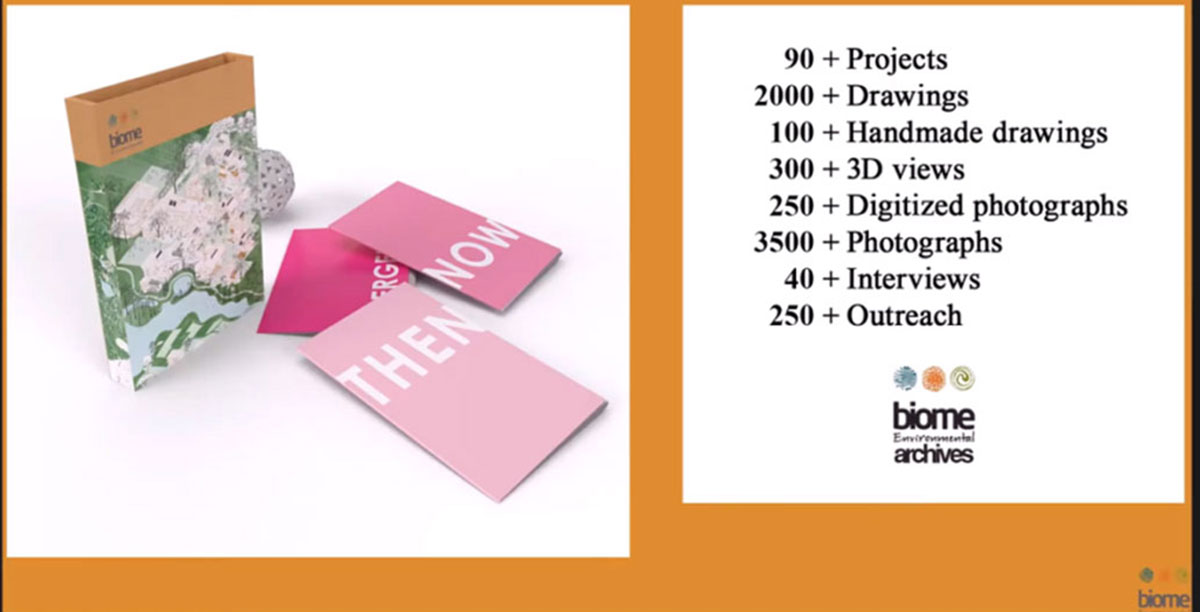
In the lockdown period, the team at the biome has been compiling the work done by the firm in three decades. From designing the cover to including the drawings, this book is a product of everyone at biome.
The conversation with Sandeep starts with the discussion on Laurie Baker and how his homes were economical. Projects at biome too, have been economical, not only in the sense of material costs but also as Sharath explains to us their process of dialogue with the clients. Through identifying the need and wants, they were able to remove some things that were not needed or identify where to increase the budget.
“ That (Arvind and Priyas house) house was again looking at what you don’t need, just by changing the material we are not able to save costs, but we work a lot with them, we dialogue with them to understand what you really need and what you can’t do without, that’s been our approach towards managing costs. In the second home (Dwarkamai residence), since they were a large family, they weren’t able to reduce requirements, but the process of dialogue helped them understand that they would need to increase the budget at some places.”
On discussing the diverse team at Biome, Chitra tells us about the architects, engineers, and artisans that have been a part of Biome. Shubha tells us about the water team, a bunch of people gathered from different professions but have a keen interest in water issues. The structure in the team is that most of them worked from home and got together on necessary occasions, each individual started as a volunteer and later was given responsibilities on core projects from which could progress to heading these projects. The team has a free and open learning environment.
The transition from urban, to peri-urban to rural, Sandeep and Anurag talk about the experience of working in the rural areas. Anurag mentions the efforts that they go through at the firm, to make people understand that the rural techniques of building a house have large merits and have come from a better understanding of the context.
“In one of the places we had proposed the Khapra, a traditional technique for building the roof, it took us a lot of effort to convince them that the traditional techniques are better than what a Mangalore tile or RCC roof will do over there…at one point we had to give up, they put the Mangalore tile roof, and then with the first winds coming in, they understood that this won’t stand.”
From architecture to peri-urban communities, Biome has worked on a large scale to create a sustainable practice. Talking about the next step Sandeep asks, how can these practices be taken to the city level?
Vishwanath answers that the challenges with water have been even clearer in the pandemic, not only of the freshwater but also of the wastewater. He argues that it is even more difficult in the rural areas as they are not connected to public water networks. The answer to this can lie in wastewater management, and simultaneously rethink our habitats in terms of what space is required for an individual.
“What we have found from our interventions around Bangalore is that if you have 40 sq. m. land area per person..then you can be water sufficient, energy sufficient, with solar energy and you can be food sufficient and grow your food too in this area, you can be waste sufficient and finally, it can be biodiversity sufficient”
This shows that we need to rework urbanization and how it treats its resources. Not only water management but also waste management. The idea is to think of sustainability as a circular economy, being wise from an individual house to the city level.
Further in the discussion, we see the documentation of the city of Bangalore as a watershed. Shubha shares with us the documentation of 15 lakes and streams done in a participatory way. They used citizen participation to understand aquifers in these micro-watershed. In an urban area, this was Biome’s attempt to not only understand the watershed but manage it better.
At the end of the talk, we see the essence of Biome’s work, both through architecture and water conservation is giving more responsibility and control to the citizens of the city or nation. In doing this, the awareness and the responses to mitigating problems increase when we see Vishwanath explains the example of good diggers of the Meghdoot enclave.
“Somewhere we have to build the citizen’s ability and not to treat him like a child, and expect the government to take care of everything, so building citizenship is at the heart of all our projects.”
Through this interview we see the abundance of Biomes work in all directions. The presentation also shows us their ability as a team to embark on progressive journeys towards a more sustainable environment. From residences to building water systems for communities, their work instigates curiosity, leaving a roadmap of steps towards it by their immense knowledge base and hope for a better environment.
